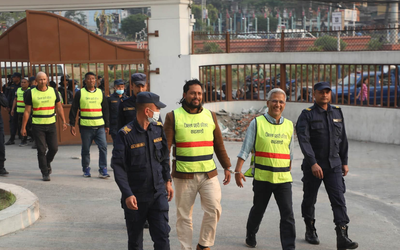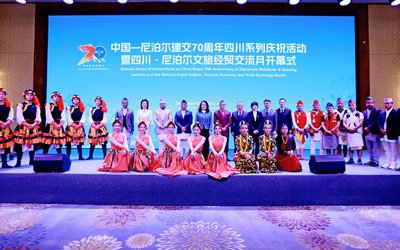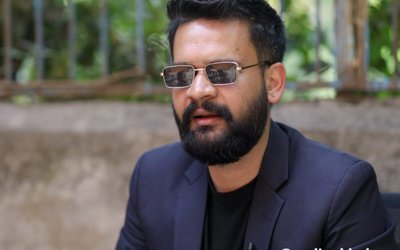More on News





Chanda Rana, Chairperson of the Save the Environment Foundation (SEF), has already taken a number of steps against the deadly plant Mikania Micrantha which is posing a serious threat to the Chitwan National Park. She has been raising the issue since 2008. Rana released a video documentary in 2009 highlighting the sate of the wild plant that infested a large swathe of grassland. Her documentary drew national and international concern over the issue as it threatened the habitat of the one-horned rhinos, other wild plants and trees of the Chitwan National Park. Environmental activist Rana participated in a program to mark the World Rhino Day on behalf of the Save the Environment Foundation (SEF). Rana spoke about the importance of her participation in the program. Excerpts:
Why did you participate in the program?
I participated in the program as part of my initiative for safeguarding the biodiversity of the Chitwan National Park (CNP) from the invasion of the wild climber, Mikania Micrantha. The plant is posing a serious threat to the rhino habitat. I consider the potential threat to the rhino habitat in CNP by the rampant colonization of the wild weed as serious as poaching and the illegal trade in endangered species.
How have you been raising the issue?
I have been initiating a campaign to raise awareness at the national level. I have already produced a documentary called “Mile a Minute, a serious threat to CNP”. This documentary was launched by the Minister for Forest Deepak Bohara two years ago. Later, I also held a conservation meeting at CNP along with a weeding program in the presence of then prime minister Madhav Kumar Nepal, ministers and other international conservation organizations.
Is the plant threatening the rhinos?
During my filming, I found out that besides poaching, another possible threat to the rhino population is due to loss of its habitat from the infestation of the wild weed. It has engulfed more than a third of the prime rhino habitat in the CNP.
How do you claim that the habitat areas have already decreased?
In my documentary, I have clearly highlighted the survey carried out by the Zoological Society of London (ZSL) and NTNC where about 50 percent of the rhino range is already affected by Mikania. At the primary rhino habitat, approximately 75 percent of the rhinos were found to be affected.
What is your next step?
Realizing the severity of the infestation, I have been carrying out my lone efforts to safeguard the CNP and the rhino habitat. As a follow up after my documentary I have been taking up this issue at the international level to mobilize collective support to tackle this serious problem.
When will your program start?
Tentatively from the second week of November. I am organizing a national workshop of all the stakeholders on the Mikania infestation in the CNP. It will be a week long program with Village Development Committees, Community Forest Users Groups, Biodiversity Conservationists, Representatives from the Buffer Zone, National Park Wardens, Nepal Army, Representatives from the Hotel Association of Sauraha, and the Nature Guide Association, Representatives from the Ministry of Forests and Ministry of Environment and the Department of Forests and Agriculture, Representatives from NTNC, WWF and IUCN and NARC.
What would be the next step?
Gleaning from the three-day workshop, we will form a Chitwan Mikania Control Task Force Committee based in Chitwan, which will contribute towards controlling the spread of the wild weed. The role of the CMCTC will be to review the infestation, and formulate an awareness program at the community level. It will document the information on the infestation and its impact on the eco-system and habitat of the rhino and other animals. A pilot project at severely infested areas will be chosen to ascertain whether a manually controlled option is feasible. This project will be implemented involving the community forest user groups and CNP representatives and other concerned local bodies.
How do you generate resources?
The needed funds would be sought from the concerned ministries and line agencies to tackle this problem. The Task Force will also be the liaison between the government and other donors for funds and solutions aimed at controlling and containing the wild weed.
Do you have any plan to organize other meetings?
I am planning to organize a high level conservation meeting inside the CNP on the last day of the workshop. The Prime Minister will be invited as the Chief Guest along with the concerned Ministers. The PM will be informed about the severity of the problem and the need to take action both at the government and the local levels.
The PM will also be taken to the sites in CNP where the infestation is the most severe. The PM will also be informed about the formation of the Task Force Committee and its role and a request will be made to support the Task Force and its efforts. This is a tentative program that I have planned.







